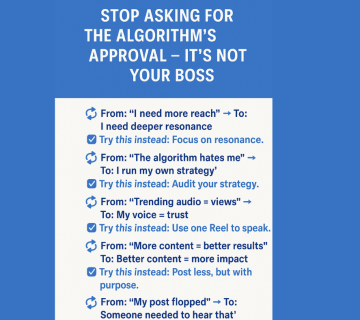 Today I want to share my thinking process for setting smart business goals with you. I like to work backwards from a financial goal to daily to-do lists. Here’s how that works. It always starts with a money goal. It helps if that goal has a meaning beyond the dollar figure. For example, let’s say that I want to buy a new car. The payment is around $400. To account for things like taxes and just to be safe, I’ll bump the goal up to $600. In other words, I need to add an extra $600 (or more… more is always better) to my monthly bottom line. Once that’s done and I am seeing that level of income on a regular basis, I’m ready to order my new car.
Today I want to share my thinking process for setting smart business goals with you. I like to work backwards from a financial goal to daily to-do lists. Here’s how that works. It always starts with a money goal. It helps if that goal has a meaning beyond the dollar figure. For example, let’s say that I want to buy a new car. The payment is around $400. To account for things like taxes and just to be safe, I’ll bump the goal up to $600. In other words, I need to add an extra $600 (or more… more is always better) to my monthly bottom line. Once that’s done and I am seeing that level of income on a regular basis, I’m ready to order my new car.
Once I know how much money I have to make, I can start to think about different ways to do just that. I could find more customers for one or several of my existing products. For example, if I have a $10 eBook, I would have to make an extra 60 sales per month. From there I can work backwards. If I know that on average one out of 10 email subscribers buy the book within the first month of signing up, I need to add 600 new subscribers to my list, which in turn takes 4,000 new visitors to my site. If that’s my plan, I know that my daily to-do list needs to include plenty of action steps to ramp up my traffic by an extra 4,000 people per month.
Of course that’s not my only option. I could also create another information product or eBook each month and sell it to both my existing and new subscribers. I could create a higher priced item so I need to make a lot fewer monthly sales to reach my $600 goal. For example, if I create a nice $100 product, it would only take 6 sales per month to pay for the car.
Since the car payment will be an ongoing thing, it also makes sense to look into recurring payments. This could be my own membership, or I could investigate affiliate marketing with as an example a $67 per month subscription with a 50% commission. That means I can expect over $30 in commissions each month. Let’s say it’s 30 to keep the math simple. I only need 20 members to pay for my car. Once I reach that number, I only need to add the occasional new member to balance out cancellations. Getting one or two more members in each month going forward should more than cover that.
Now I have a concrete goal to work towards which is convincing 20 people to sign up for the membership. My daily tasks will include things like creating content that includes an offer to the PLR membership, a short report about using PLR to build a targeted sub lists of people interested in using PLR in general. Then I start driving traffic to the content and the opt-in offer and start mailing regularly about the PLR membership. I may even craft a short autoresponder sequence to create an evergreen funnel.
Of course that’s just the tip of the iceberg. By thinking outside the box and putting in some time and effort initially, it won’t take me long to get those 20 signups that pay for my new car payment. Because I really want that new car, I’m going to be motivated to get it done and grow my business by those extra $600 per month. In fact, chances are great that I’ll overshoot the goal by several hundred dollars and it’s something I can continue to grow month after month.
Action Steps:
- Determine your financial goal for a month
- Determine how many new subscribers you need per month
- Look into affiliate marketing

Join our Simply Smart Marketing Facebook Group and share your thoughts with other small business owners.




